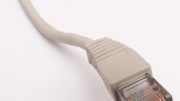Ever wonder what a MAC address is? It’s one of those terms you hear a lot with computers and computer accessories. It’s not just a place where they serve macaroni. A MAC address isn’t where Mayor McCheese lives either. A MAC address is a critical part of the way your computer systems function. Without something like that, you could have some problems that wouldn’t be easy to fix.
What a MAC address really is
A MAC address is used in networking to help identify a specific part of your computer, phone or tablet.MAC stands for Media Access Control address, that it is an entry/exit point for connecting to a network. Every network device is given a unique number, sort of like a serial number. It’s not tied to the phone or computer, it’s just for the network chips. In fact there is a different MAC address for every network chip, so it’s possible that your phone has three or more (one for voice, one for data-over-cellular, one for Wi-Fi, one possibly for Bluetooth, etc.)
MAC addresses are used to help identify a computer when it joins a network. They help the network hardware remember which devices are which so if there are any “special needs” they can be met quickly. They’re different from IP addresses, which aren’t necessarily unique. IP addresses are given out by routers in order to make communication easier, but MAC addresses are forever (at least until you get a new device or a new network card.)
What’s the difference between a MAC address and an IMEI?
A while back I told you about IMEIs. An IMEI is a unique number given to any cellular device that always identifies it. That kind of sounds like a MAC address, doesn’t it? The two are not the same and you probably have both in your device.
There’s only one IMEI in a device, and only cellular devices have IMEIs. On the other hand, every network adapter has a MAC address. For example if your computer has both wired networking and Wi-Fi, it has a separate MAC address for each. Plus, the MAC address may change if you change the network adapter. The IMEI is married to the device forever and in some cases it’s a crime to try to change it. That’s because the IMEI can be used to track your phone if it’s stolen.
Will we run out of MAC addresses?
So each networked device has a MAC address, possibly two or three. Should you be worried that we’ll run out of them? Hardly. There are so many available MAC addresses that at this point it’s hard to imagine running out of them. If there were a shortage, then manufacturers could look at things like obsolete mobile phones or computers to reclaim a large bunch of them. We’re in no danger of that now, since the current pool of addresses has about 280 trillion possible unique numbers.
This tutorial is brought to you by Solid Signal. Shop at Solid Signal for everything you need to live your best digital life! If you have questions before, during, or after the sale, we’re here for you! Fill out the form below or call us at 888-233-7563.





